Lighting ‘Calendar Girls The Musical’ for Tring Theatre Company
I recently had the pleasure of working with Tring Theatre Company to light their amateur production of Calendar Girls The Musical at The Court Theatre in Tring.
I’m always disappointed at the lack of useful information when Googling for anything to do with theatre lighting – especially from other folks involved with am-dram – so I thought it would be worth writing up what I did, what worked and what I’d want to improve.
At the very least, it’ll be useful for me to come back to when it comes to my next production!
The Show

After Annie’s husband John dies from leukaemia, her friend Chris has an idea – the ladies of the Knapeley Women’s Institute should create an ‘alternative’ calendar, to raise money to buy a new sofa for the hospital relative’s room. And by alternative, she means nude!
After a couple of years of lockdown and restrictions, it was a delight to be back in the theatre, especially to be part of such a wonderful show. We pretty much sold out every performance, and the cast and band were both brilliant, receiving well-deserved standing ovations every time.
Alice Young came up with a fantastic set design, which was more or less static and let the show flow smoothly without any need for time-consuming set changes.
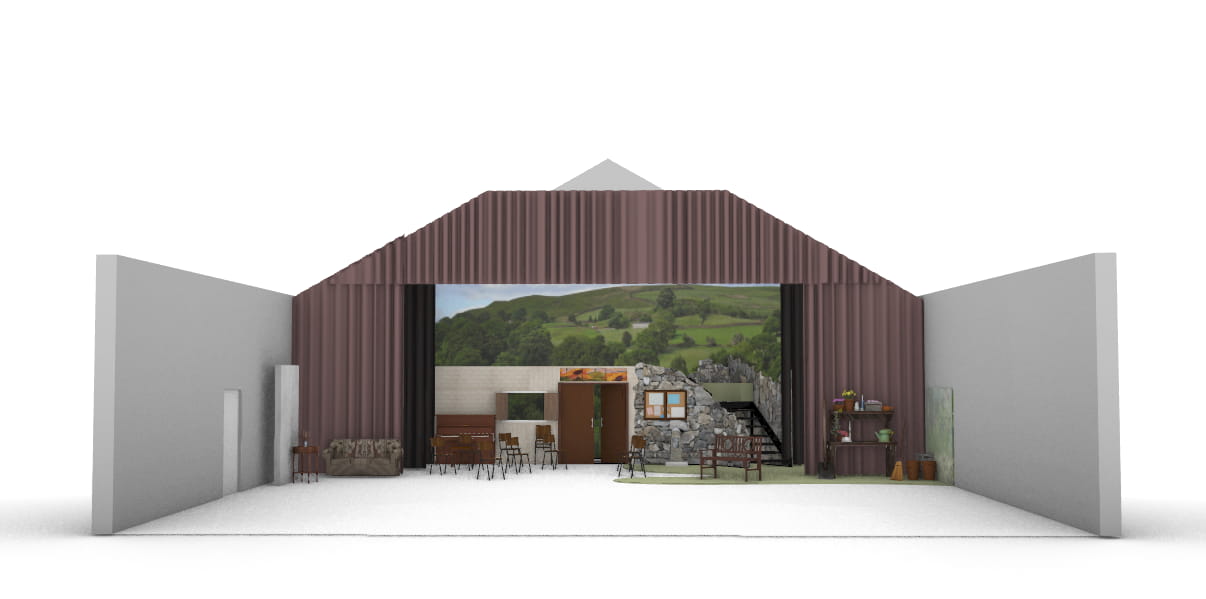
The main stage was used for the village hall and the ‘dales’, with a raised 7 foot deck at the back which was home to the band, and also used for the ‘top of the hill’. Flats across the front represented the interior of the village hall, gradually blending through exterior brickwork to the rocks and greenery of the dales.
The theatre lacks flying facilities and has limited space off-stage, making it hard to bring in additional scenery, so we also created two additional areas downstage of the main tabs.
The stage right area played home to the hospital in act 1, and was re-dressed during the interval to become Ruth’s house. The stage left area was Annie’s garden.
The Process
In August I got a message out of the blue from Grizelda, the producer – the group were looking for someone to do the lighting for their production, and my name had come up in discussion.
This was a little later in the process than I’m used to – only a few months from opening night, and with the set design already pretty much firmed up.
I had an initial phone call with Grizelda, talking through their basic requirements. They’d also reached out to another person, Nick, who was interested in getting involved.
We agreed to meet for a chat in the pub, where I met Grizelda, Nick and Naomi, the producer. We talked through set design, identified the key areas of the stage that needed to be lit independently, and went into more detail on some of the effects that they were after.
I went away and came up with an initial design, including working what I wanted to hire. I’m always conscious when looking to hire for an amateur production that I’m spending money that isn’t mine, so as well as being clear on costs I made sure to talk the production team through the extra capabilities any hired kit would bring.
Once they started running entire acts at rehearsals, I went along to watch, as well as capturing the whole show on video.
I was able to import Alice’s 3D model of the set into Capture, the lighting design software I was using. This let me check that the key elements of the lighting design would work well with the realities of the set.

As the show approached, I had to start firming up on some decisions so that I could order things like lighting gel and gobos.
I linked another laptop running the control software, Eos, to the visualiser. With the script and the video from rehersals as reference, I was able to use the visualiser to get the basic structure of most of the show in place before we’d even set foot in the theatre.
The original plan was to spend a day going through the show with Nick, finishing bits off and giving him the opportunity to get familiar with the software and the rig, but I caught a nasty chest infection which ended up derailing things somewhat.
The Kit

I ran the show on Eos using an ETC Nomad, Gadget II and my old MacBook Pro. A friend very kindly lent me their lxkey keyboard, which made programming a bit easier (thanks Jon!)

The theatre have 48 ways of dimming – at least 2 of which seem to be perpetually out of action – which was just enough for what I wanted to do. I made use of the majority of the theatre’s lantern stock, including:
- 6 × ETC Source Four Jr Zoom 25°-50°
- 8 × ETC Source Four Zoom 15°-30°
- 4 × ETC Source Four Zoom 25°-50°
- 23 × Selecon Rama Fresnels
- 8 × ProLight Slimline 9Q8
- 12 × 1m LED Battens (installed along the cyc and as tab warmers)
I was slightly constrained by the fact that we needed to return the theatre to its ‘standing rig’ after the final show – there was a book festival in the theatre early the following day. As such, I tried to avoid moving too many of their fixtures around – and we were still there until nearly 3am.
I also hired in:
- 2 × Robe Robin DL4S Profiles, which were rigged front of house
- 2 × Chauvet Rogue R1 BeamWash, which were rigged on the mid-stage bar
- 1 × 20m Chauvet Festoon, which was run along the top of the set and down the edge of the ‘rock wall’
Things that worked
Use of colour
The show has a lot of warmth and heart to it, and I wanted this to come through in the lighting. The vast majority of the fixtures ended up with some sort of colour in them.
I made liberal use of yellows and golds:
- Pale Amber Gold ( L009)
- Wheat ( L763)
- Oklahoma Yellow ( L767)
- Nectarine ( L776)
I also worked in quite a lot of lavender, which wasn’t a colour I’d really worked with much before:
- Lavender Tint ( L003)
- Light Lavender ( L052)
- Special Lavender ( L137)
- Lilac Tint ( L169)
The show has a number of scenes that are set at night. I used a few colder colours for these scenes, but usually paired them with some lavender to avoid it feeling too cold:
- Mist Blue ( L061)
- Quarter C.T. Blue ( L203)
- Moonlight white ( L603)
I especially liked how well the lavender worked in the ‘garden’, the area downstage left of the tabs. I usually dislike lighting the sets in these areas as the lighting positions are awkward, but for this show the garden ended up being one of the areas I was happiest with – though I think the beautiful set decoration played a big part.

I also included a little Steel Green ( L728) for the scenes set in the hospital, in order to give those scenes a slightly more clinical and cold feel.

It definitely felt very different to the other scenes, though I would have liked to have tried a few other colours as well if I’d had the budget and time.
I possibly could have gone stronger with some of the colours. Although the visualiser gives a rough idea, and I have a gel ‘swatch book’, I still struggle to predict what a colour will look like until it’s in a light and you turn it on for the first time.
Face light
This is probably the most thought I’ve put into the face light and general wash for a show. I wanted to make sure the cast felt really well lit – as Jessie and Cora discuss in the show, the lighting can make all the difference!
JESSIE
Where’s all the cellulite?
CORA
It’s there. It’s just in shadow
JESSIE
Remind me to spend the rest of my life in shadow.
I crossed 6 of the fresnels from the ‘front’ front of house bar, diving the stage into thirds. Each third was lit in Pale Amber Gold ( L009) from stage right and Light Lavender ( L052) from stage left.
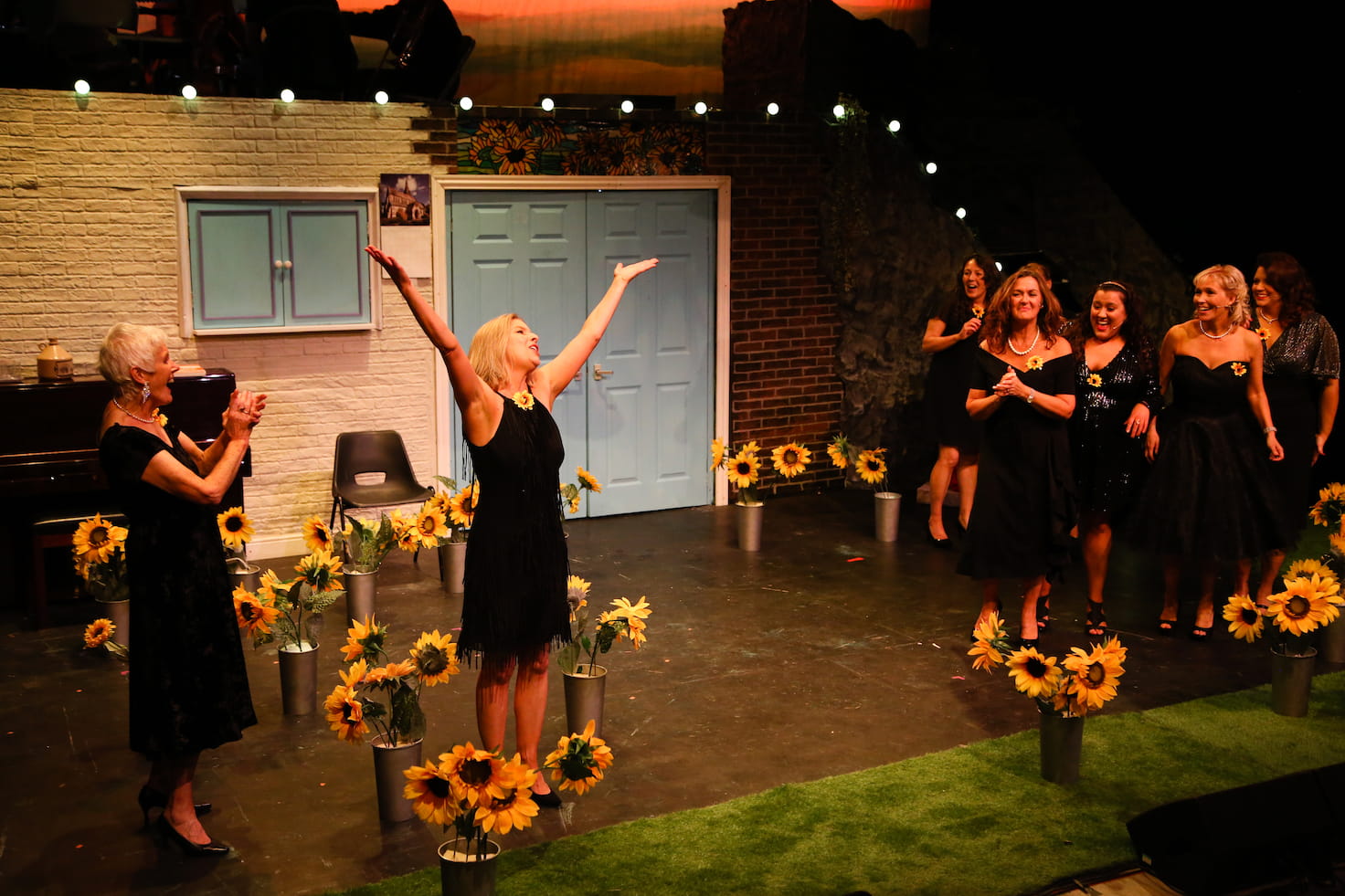
This was then reinforced with two Source 4 Zooms in Lavender Tint ( L003) from the rear front of house bar.
Finally, I crossed two Source 4 Zooms from the auditorim stage left / stage right bars with Cosmetic Silver Rose ( L186), which is a ‘cosmetic’ gel that includes a little diffusion. I mostly used this for the last scene – the ‘photo shoot’ – and was generally happy with how it looked, although I’ve no idea if I was using it correctly.
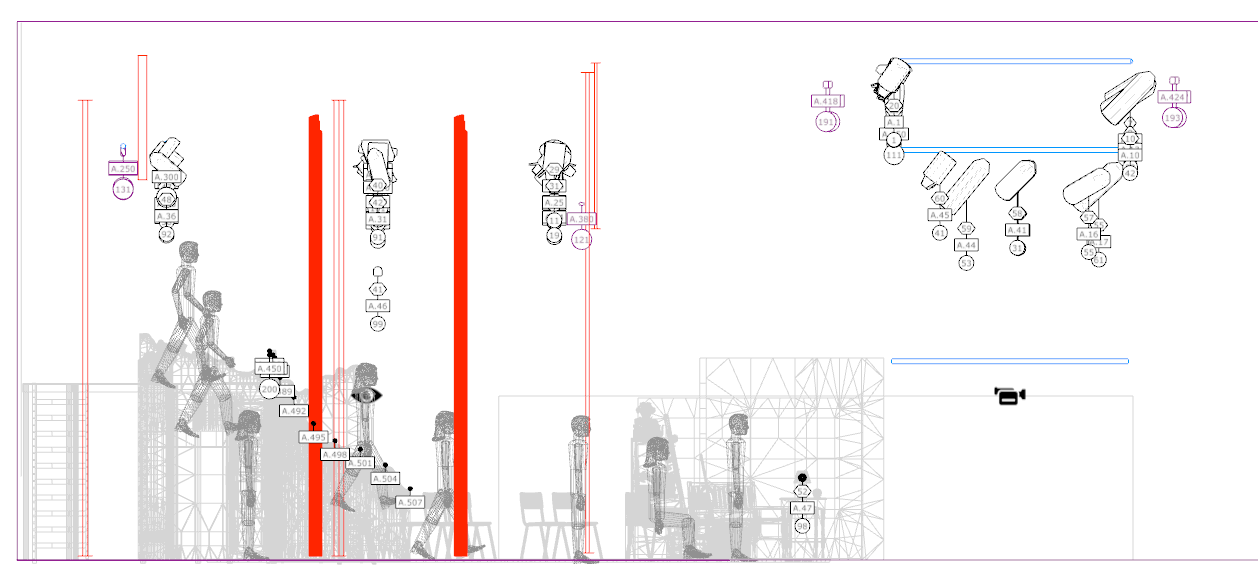
All of the auditorium lighting positions are quite high (6m for the 2 main bars and around 5m for the bars at the sides) and so the lighting angles end up being quite steep. Because of this, there were some harsher shadows appearing under the cast’s eyes and necks than I would have liked.
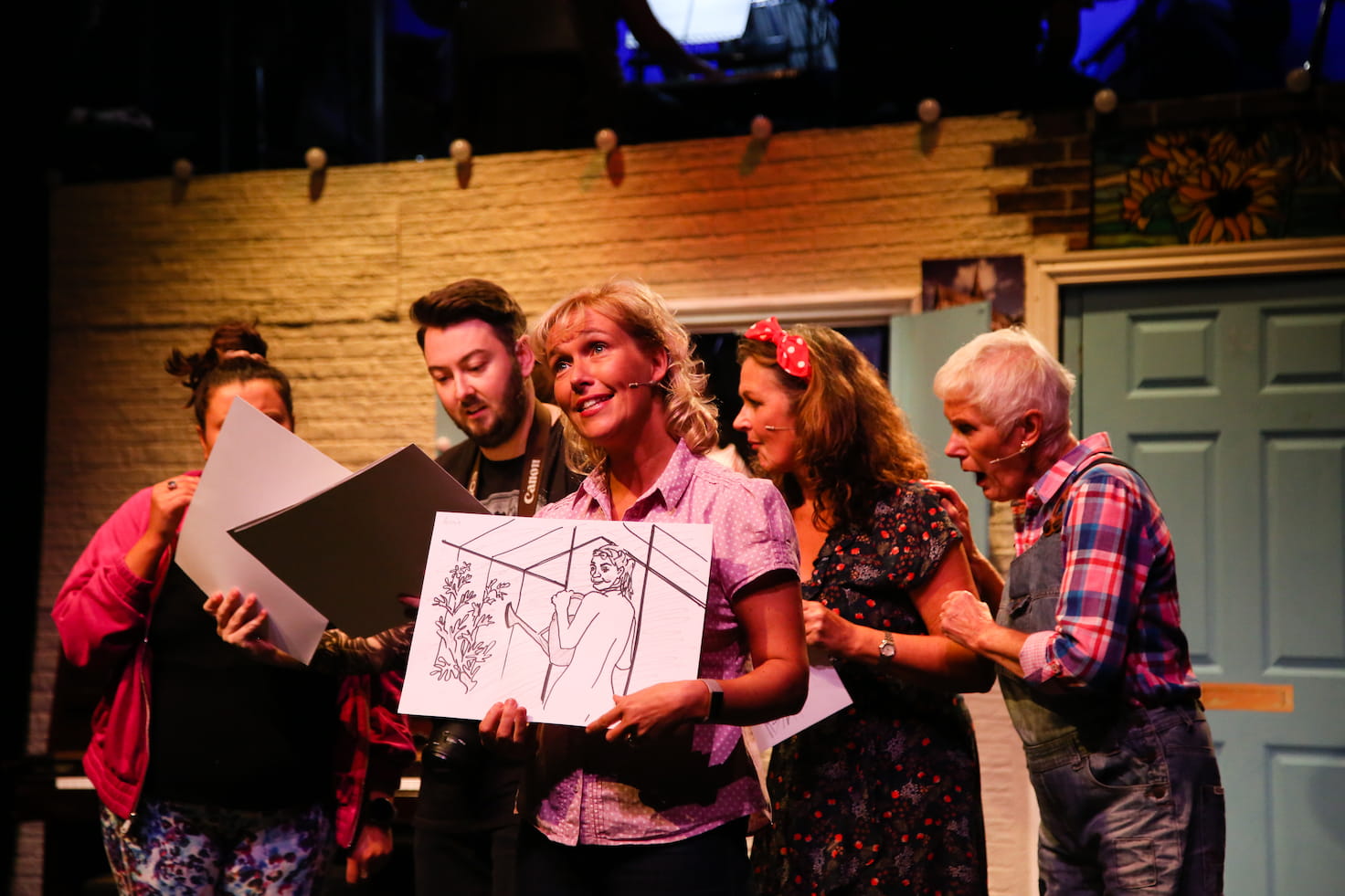
If budget and time had allowed, I would have liked to have looked at adding either booms or some lower lighting positions front of house – or both! But given the constraints I was working within, I’m pretty happy with how it all looked.
Act 2 Scene 8: The Photo Shoot
A lot happens in the last scene – it’s a good chunk of the second act, and ended up taking around 80 of the show’s 228 cues.
I used the cyc, festoon and the LED backlight to give each month a different look that suited its theme. For example, pastel colours for Celia’s home baking, a hippy-ish rainbow theme for Jessie’s knitting, and a floral green/yellow mix for Annie’s gardening.
I also used one of the R1 BeamWashes to give the person being ‘photographed’ a tight back light, and one of the DL4Ss to pick them out with a key light.
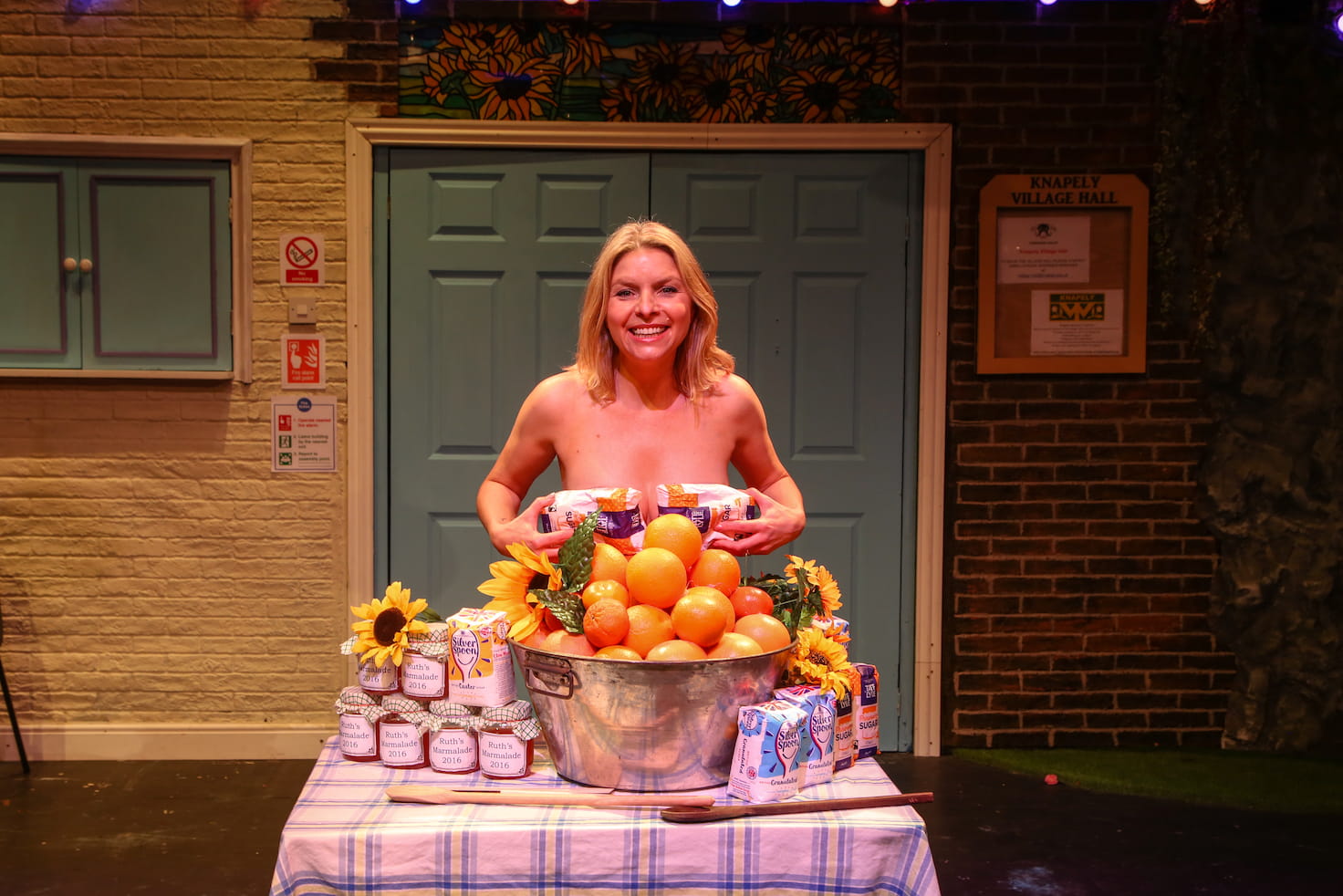
This worked more effectively for some shots than others. The actors set a lot of the props and didn’t always hit their mark – possibly because I didn’t make it clear that the placement was important! On reflection, I think the colours that I used for some of the backlighting were too strong, and softer tints would have looked better.
For the camera flash itself, I added a separate cue which bumped the zoom and intensity of both moving heads, and set them to a cold white, with a hang cue after 0.25s to revert them to their previous state.
The sound engineer was using QLab to fire the sound effects, so I networked our laptops together and used Open Sound Control (OSC) to trigger the ‘camera shutter’ sound effect cue at the same time, so the lighting and the sound effect were always perfectly in sync.
When it’s Chris’ turn for her photo to be taken she really ‘gets in to it’ and Laurence ends up taking a lot of photos. I ended up chaining 16 cues together for lots of flashes, which sort of worked. However, on some performances it went on longer and so the flashes stopped too soon. Given the time, I’d have liked to look into doing something ‘clever-er’ – perhaps using looping or an effect.
For the group shots, I used both R1 BeamWashes together, and for the flash I also tilted them up and out into the audience to give them just a little extra impact.
Other lighting effects
There were quite a few places in the show where I took advantage of the framing shutters and the animation wheel in the DL4Ss.
Early on in the show John brings in some ‘liquid refreshment’ – a harvest punch which is topped with sunflower seeds and set alight. The direction in the script says:
(He clicks a lighter on and creates an illuminated group of lit drinks)
Challenge accepted!
I shuttered one DL4S down to the group of drinks, carefully positioned on a trolley. By using an amber colour and a gobo along with the animation wheel we got something like a flickery, flame-like effect. And by moving the stage left shutter we could ‘animate’ the fire spreading across the group of drinks as John lit each one.
I was very happy with how this looked, although it was rather subtle even with the other stage lights dimmed. The DL4S just didn’t have the power to punch through against everything else.
I also used the animation wheel to create the ‘river’ that Chris and Annie settle down by at the end of the same scene, to add a slight ‘dappled’ lighting effect for the funeral at the end of Act 1 Scene 7, and for the preset as the audience came in.
The Festoon
I’ve mentioned the festoon a few time already, but I’m going to mention them again as I was very happy with how this idea played out. During the first meeting I had with the production team they’d mentioned using fairy lights for ‘Christmas’ in Act 1 Scene 5.
I’d already been looking into festoon in the context of the spring fete, and when I spotted festoon that allowed individual RGB control over every individual bulb in a local firm’s hire catalogue I got quite excited about the possibilities.

They ended up being used in quite a few places throughout the show – as christmas lights, as festoon at the fete, and later in the show just to add colour and bring scenes to life.
I used discrete timing and delays throughout the show to try and make the scenes blend smoothly into each other, and it worked really effectively with the festoon - by putting a different delay on each bulb I could stagger their timing. For example, when they were first introduced in Act 1 Scene 5 they twinkled on from left to right.
Some scenes were set in the flower shop, distinguished by being set centre stage with the ‘sunflower’ stained glass window above the double doors lit. For those scenes, the individual control meant we were able to illuminate just the bulbs above and around the door, fading them out at the edges.
Things that could be improved
In no particular order:
-
I had a number of breakup gobos that were barely visible – a window for the village hall, stained glass for the funeral, and some foliage across the ‘rock face’ for the dales. I was using the Source 4 Juniors for these and they just didn’t have the power to cut through the stage wash.
-
Somewhat related, I found it difficult to differentiate between the various different locations we were trying to portray on the main stage. Although the set had distinct areas, the action took place across the whole stage, so everything ended up looking a bit sames-ey.
-
The tech felt rushed but at the same time seemed to take forever. After a couple of years of not doing shows, I was definitely feeling a little rusty and struggling to make effective decisions.
-
As a result, Act 2 ended up a bit rushed. I hadn’t been able to pre-program a lot of it, and there were quite a few scenes that only had 1 or 2 cues where I’d have liked to have done a lot more. Especially ‘Kilimanjaro’ in Act 2 Scene 4 – one of the most powerful songs in the show, and Jill ended up delivering it from semi-darkness every night.
-
Bits of the stage just didn’t have the coverage they needed. I spotted just before the final show that one of the fresnels rigged in the auditorium had dropped and was now lighting the back of the front 2 rows of audience, which probably didn’t help.
-
I spent quite a lot of time listening to the soundtrack on Spotify in preparation for the show, but didn’t realise until quite late on just how much it had been revised when the West End show went on tour.
A notable addition was ‘Mrs Conventional’ which was seeingly split out from ‘Spring Fete’. ‘Who Wants A Silent Night’ – one of my favourites on the soundtrack – which also substantially different.
-
Nick was a fantastic ‘partner in crime’, but didn’t really know how to involve him effectively. I’m most used to working alone, the main access equipment for the venue is a scissor lift which only I was trained to use, and I was the only person familiar with the software. Add in a dash of just generally feeling rusty, and I found it very difficult to delegate!
-
I fundamentally do not understand how to make the Eos effects engine do what I want. There were a few places where I’d have liked to have added a chases or effect, but I just did not get on with it.
Reflection
Our NODA show report said:
Continuing with the backstage credits, I must congratulate your lighting designer Oliver Byford who along with Techie Nick Taylor added so much to the smooth running of the show as the lights came and went perfectly on each section of the set as required.
Okay, so that basically just means ‘the lights went up and down at the right time’, but given how picky some NODA reports can be I’ll take it as a win!
This show, along with the most recent shows I’ve lit for Vale Musical Society have challenged me to learn some of the subtler aspects of stage lighting. Historically I’ve been involved with louder, vibrant ‘rock n’ roll’ musicals where you can more or less just throw lots of colour and effects at the stage and get away with it.
For this show the lighting really just needed to get out of the way and let the cast shine – to enhance, but to be more or less invisible. I think I achieved that.
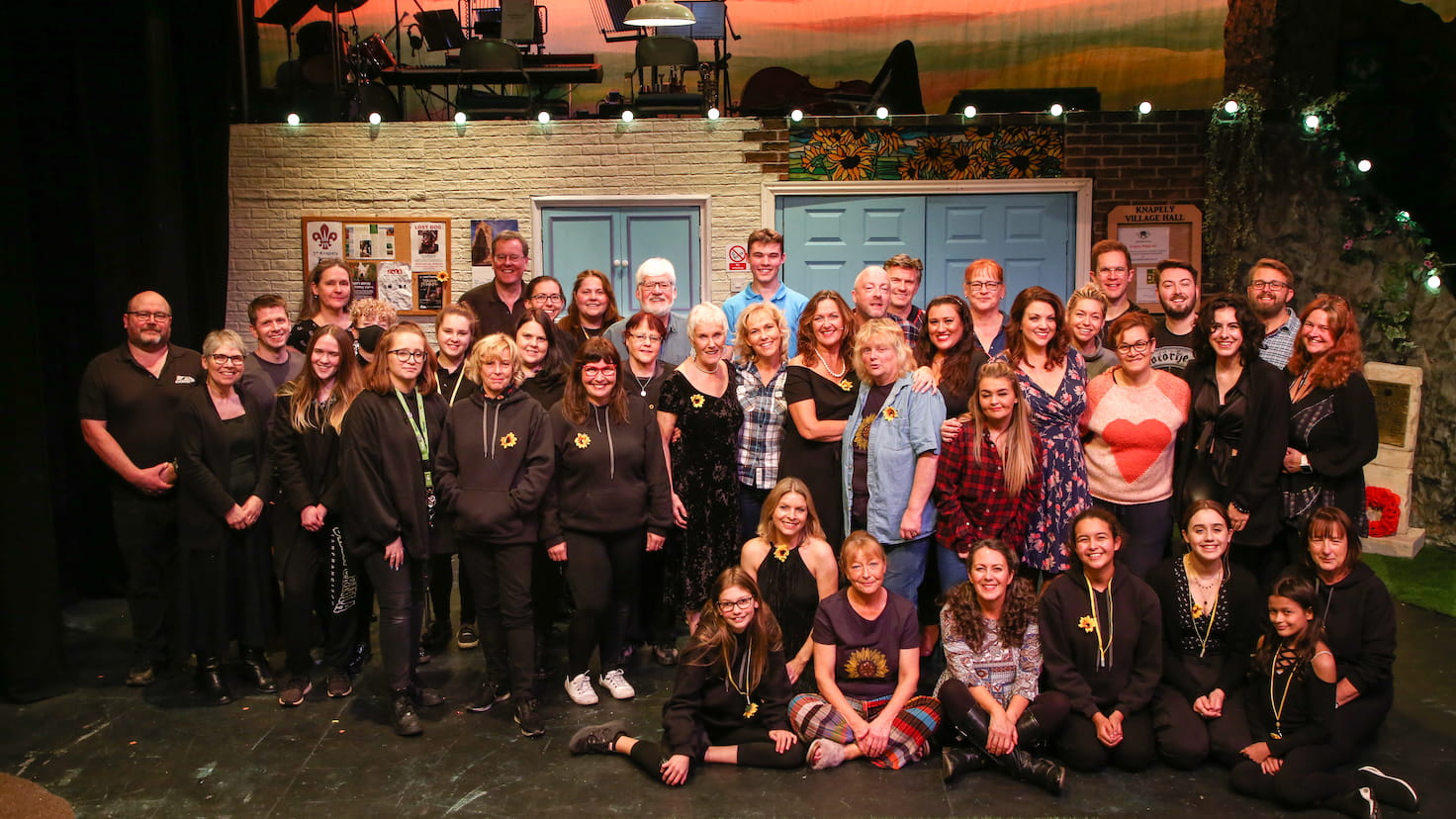
Plus, I got to work with this lovely bunch of folk.